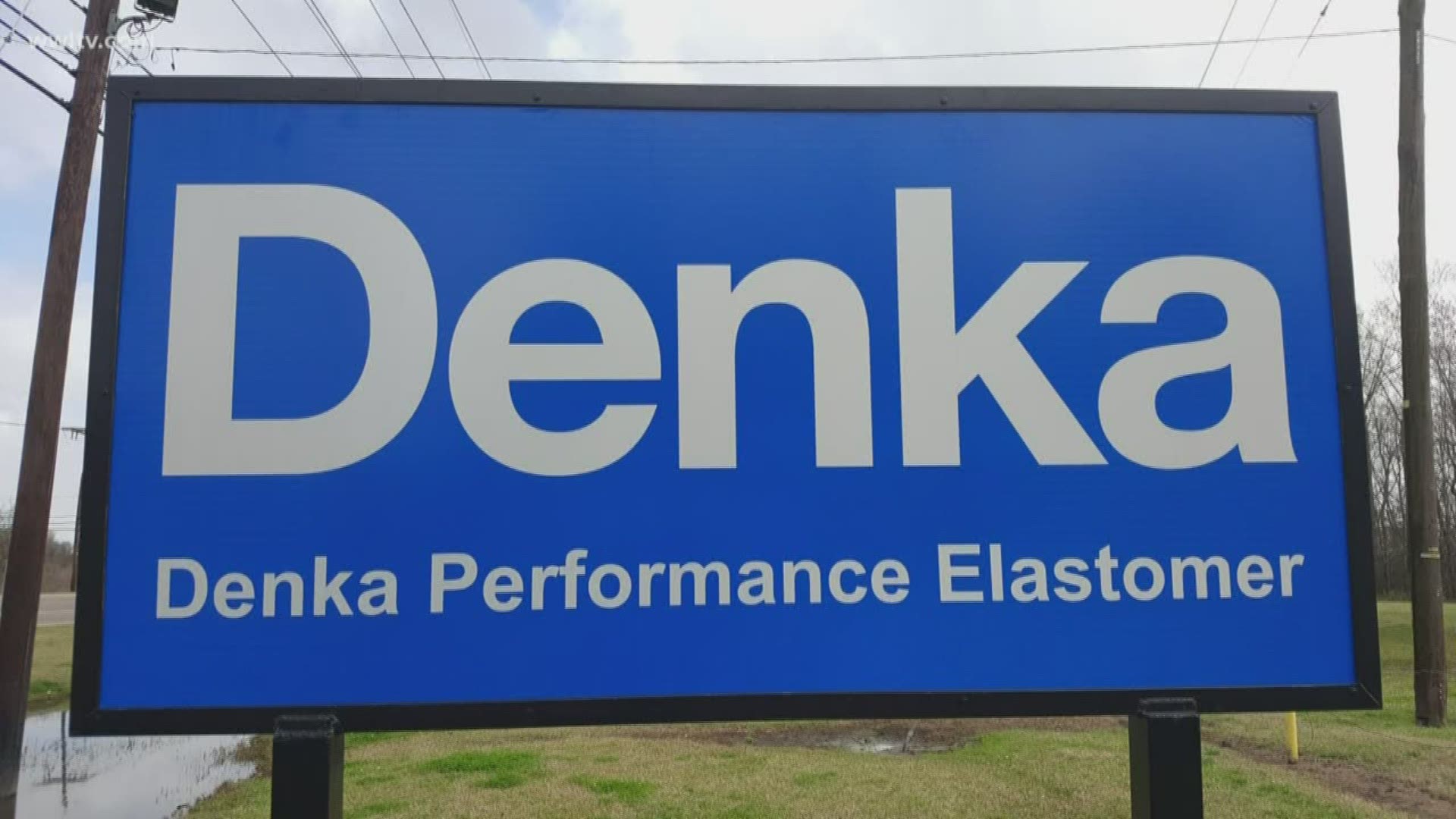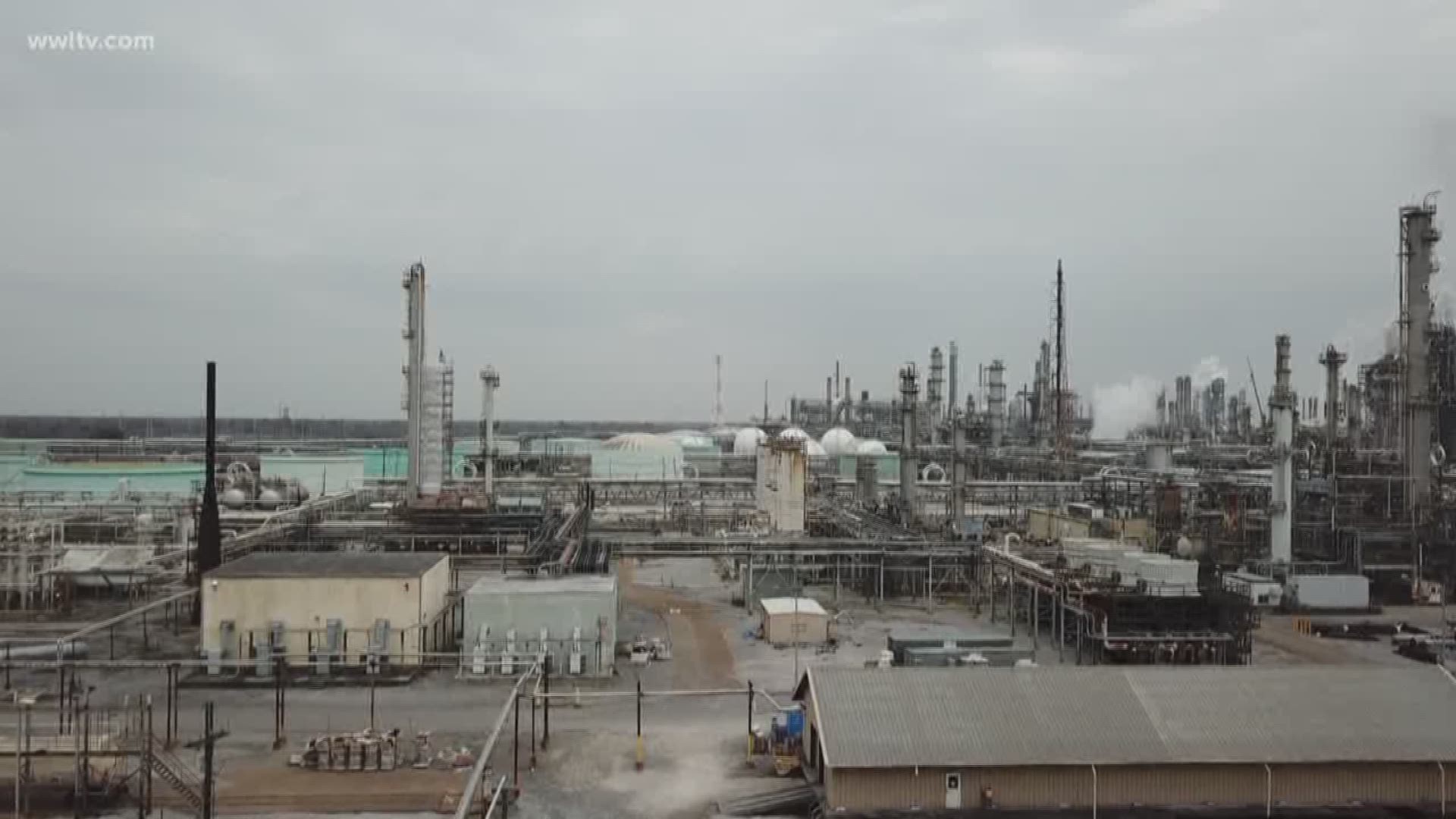NEW ORLEANS — The Louisiana Department of Environmental Quality is giving a chemical plant in LaPlace 30 days to prove it has reduced toxic emissions in accordance with a 2017 agreement.
The DEQ sent a letter to Denka Performance Elastomers this month informing the Japanese synthetic rubber company that it failed to show enough reduction in chloroprene emissions. The state agency signed an administrative order in January 2017 in which Denka agreed to reduce chloroprene emissions by 85 percent from its 2014 totals.
Denka filed its annual report of “emissions inventory” this month showing chloroprene emissions of 75,643 pounds for 2018. That represents a reduction of about 70 percent from its 2014 chloroprene emissions, which were about 248,000 pounds.
Denka would have to record less than 37,200 pounds of chloroprene emissions in a 12-month span to achieve an 85 percent reduction.
The company said complications with new equipment at the start of 2018, which it called a “shakedown period,” kept it from reaching an 85-percent reduction for the full calendar year. But Denka contends that it has achieved that level of reduction on a daily basis since March and promises new data will prove that to DEQ.
Denka “is developing that snapshot of current emissions, which will reflect the 85 percent reduction Denka’s operations are currently operating at and have been operating at since the shakedown period was completed last year,” Denka spokesman Jim Harris said.
Story continues under video
Denka purchased the only neoprene production facility in the U.S. from DuPont in 2015. Within weeks of the purchase, the U.S. Environmental Protection Agency determined Denka’s chloroprene emissions were responsible for the highest airborne cancer risk in the country, leading to pressure on Denka to spend about $30 million on the emissions reduction equipment.
Under the agreement, Denka had to have a final piece of equipment in place and operating by the end of 2017. The company issued a press release in January 2018 celebrating installation and operation of all the new equipment, but later said it was not functioning optimally until March 2018.
Residents living near the plant and families of children attending schools nearby complained about continued high chloroprene emission readings.
Bobby Taylor, a plant neighbor and head of Concerned Citizens of St. John, said DEQ Secretary Chuck Carr Brown attacked his group and called them “fearmongers,” instead of holding Denka to a strict emissions standard.
In an interview with WWL-TV last year, Brown apologized for “using that term,” but said “instead of fanning the flames we should all be working together for a solution that’s protective.”
Taylor said this month’s letter giving Denka another 30 days to come up with more data is just more of the same from Brown.
“And the government is still playing footsie with them and to me, aiding and abetting them, instead of demanding, instead of the DEQ doing what it’s supposed to do and that is to regulate the industries,” he said.
Ironically, the front of the DEQ webpage touts a proclamation from Gov. John Bel Edwards that May is “Air Quality Awareness Month.”
DEQ spokesman Greg Landry said the agency will get tough if Denka doesn’t show it is meeting the 85-percent reduction level. But he said the company needs to be afforded due process and a chance to show it has reduced emissions by 85 percent with the emissions reduction equipment fully operational for a full 12 months. He said the 2018 annual data only captures nine months of fully operational equipment, so Denka should have a chance to make an “apples-to-apples comparison” with the 2014 benchmark.
Taylor is among a group of activists that plan to march next week from Denka and other chemical plants to arrive at the Capitol on June 3 and demand to speak with Edwards. The group, which includes larger environmental groups like Louisiana Environmental Action Network, Louisiana Bucket Brigade and Sierra Club, said it is having trouble getting approved to march on state highways and across the Mississippi River on state bridges.


